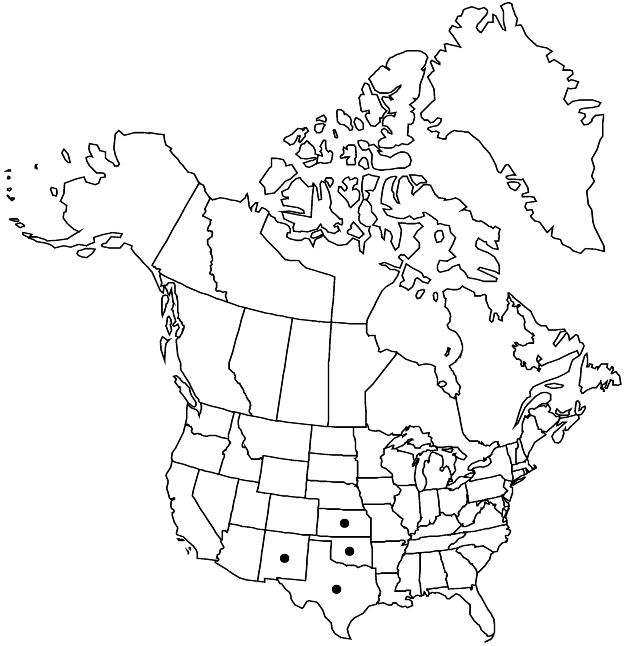Euphorbia carunculata
Rhodora 50: 63. 1948.
Herbs, annual, with taproot. Stems prostrate, spreading and lanky or occasionally mat-forming, ± succulent, 70–150 cm, glabrous. Leaves opposite; stipules usually distinct, occasionally connate basally (primarily at distal nodes), usually divided into 2–5 subulate to subulate-filiform segments, occasionally forming narrow deltate segments (primarily at distal nodes), 0.8–1.8 mm, glabrous; petiole 3.1–6.3 mm, glabrous; blade ovate to elliptic-oblong, 5–26 × 4–12 mm, base subsymmetric to symmetric, rounded to cuneate, margins entire, apex usually mucronate, rarely acute or obtuse, surfaces glabrous; pinnately veined. Cyathia solitary at distal nodes; peduncle 1.4–3.6 mm. Involucre campanulate, 1.1–1.8 × 1.5–2.5 mm, glabrous; glands 4, yellowish, sessile or short stipitate, circular to oblong, 0.5–0.7 × 0.5–0.8 mm; appendages white to yellowish, ovate to oblong, occasionally rudimentary, (0–)0.8–1.2 × 0.8–1.5 mm, distal margin entire. Staminate flowers 15–25. Pistillate flowers: ovary glabrous; styles 0.7–1 mm, 2-fid 1/2 length. Capsules ovoid, 4.7–5.5(–6) × 3.6–5.1 mm, glabrous; columella 4.3–5.1 mm. Seeds grayish white to reddish brown mottled, bottle-shaped, strongly dorsiventrally compressed and weakly 3-angled in cross section, (2.8–)4.1–5.2 × 1.2–2(–3.4) mm, smooth; carunclelike structure linear, 0.4–0.5 × 0.1–0.2 mm.
Phenology: Flowering and fruiting summer–fall.
Habitat: Sand dunes.
Elevation: 400–1300 m.
Distribution

Kans., N.Mex., Okla., Tex., Mexico (Chihuahua).
Discussion
Euphorbia carunculata has a highly localized and scattered distribution. The species is restricted to sand dunes and known from only a handful of localities throughout its relatively wide range. The seeds are unique in being bottle-shaped and strongly laterally compressed, and unlike other members of sect. Anisophyllum, there is a minute, linear, carunclelike protuberance at the hilum.
Selected References
None.